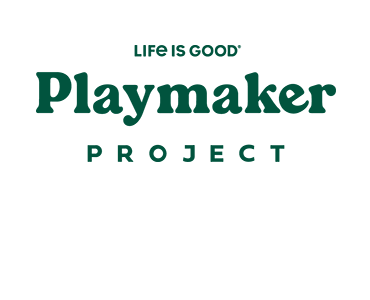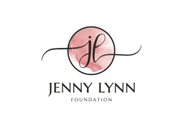A Force for Good - CSR meets the “Purchase with a Purpose” Consumer
By Deborah Kotob, ABOM
Course Objectives:
Upon completion of this course, participants should be able to:
- Define CSR.
- Describe the conscientious consumer.
- List the ways that CSR benefits society.
Credit Statement
This course is approved for one (1) hour of CE credit the American Board of Opticianry (ABO) Credit. Non-Ophthalmic General Education, Course STWJHI024.
Support
This product spotlight CE is supported by a McGee Group educational grant.
What is CSR? “Corporate social responsibility (CSR) is a business model by which companies make a concerted effort to operate in ways that enhance rather than degrade society and the environment. CSR can help improve various aspects of society as well as promote a positive brand image for companies.” (investopedia.com) Practicing CSR is usually seen in big companies to raise awareness, build trust, take responsibility and encourage change. However, the surge of younger generations, with their strong commitment to social awareness, has made CSR a priority for businesses of all sizes.
In case you are skeptical about how much the average person cares about CSR, in a 2015 study, 80 percent of consumers stated they would tell friends and family about a brand’s CSR efforts.

We are amid a growing consumer movement fueled by the desire of the conscientious consumer to purchase with a purpose. This activist consumer actively seeks out socially responsible brands and businesses and willingly pays more. Americans gave over $400 billion to charity in 2021, according to the Give Back report. Giving is in our nature; we are the only species on the planet that derives joy from giving, even when that giving comes at a cost to ourselves. I was fascinated to learn that true altruism, giving at a cost to oneself, is a uniquely human trait. Looking out for others and our planet may be hard-wired into human nature to promote the survival of the species.

Lawrence Glickman, an American Studies professor at Cornell University, authored the book Buying Power: A History of Consumer Activism in America. In his book, he tells the story of one of the earliest documented examples of conscious consumerism dating back to the 1820s when Quakers and free Black abolitionists started the free produce movement encouraging the purchase of free-made goods. As ECPs, we have the opportunity to support lens and frame companies who practice social responsibility through giving back.
Conscious consumerism matters to all generations, but let’s look at some trends related to each generation’s giving habits.
The Silent Generation (1928 to 1945) gives the most per capita each year and donates to the largest number of charities. This generation is not digitally inclined and tends to respond to snail mail requests for donations and phone solicitations. They will respond to in-office point-of-purchase displays with messaging about giving back since face-to-face is their preferred mode of business transaction.
The Baby Boomers (1946-1964) are one of the most giving and financially generous generations. They support CSR largely because they have lived to see the negative effects on the environment and the social consequences of irresponsible corporate behavior fueled by their generation’s rampant consumerism.
Millennials (1981-1996), often praised for their strong sense of social responsibility, are reshaping the charitable landscape. They prioritize causes that align with their values and are highly engaged in peer-to-peer fundraising. Online giving is their forte, with crowdfunding platforms and social media serving as powerful tools to raise awareness and funds. Millennials also value a sense of personal connection with the causes they support, preferring to donate to smaller grassroots organizations and social enterprises. For Millennials, the absence of CSR may have a more pronounced negative effect than the positive impact of a company demonstrating CSR.
Gen Z (born 1996 to 2014) members, like Millennials, support causes near and dear to them. Gen Z holds strong values related to racial justice and sustainability overall. Mobilizations such as the Global Climate March, led by Gen Z activist Greta Thunberg, thrive on the activism of young people. Climate change is one of the issues Gen Z cares about most.
Gen Alpha was born in or after 2010, the same year the iPad was born. Members of “Generation Alpha” were named by Mark McCrindle and his consulting agency in 2008. They report that by 2025, this generation will number more than two billion—the largest generation in history. Abdaal Mazhar Shafi, co-founder of UpstartEd, states: “Transparency in business practices and a strong social impact position will also go a long way to building trust with Gen Alpha as they age into consumers. You can do well as a business by also doing good. They are almost demanding it now. As Gen Alpha is more aware of the damages caused by corporations, they will seek out brands that contribute to the solutions.”
Why is corporate social responsibility gaining in importance for brands, businesses and consumers? Social responsibility is about contributing to the greater good of society and the planet. Socially responsible companies are seen as a positive force in society, and brands associated with giving back imprint on the conscientious consumer more than other brands. When businesses support a socially responsible effort, they help raise awareness for important causes. With the rise in conscientious consumerism, we are much more inclined to purchase with a purpose, actively seeking out and supporting companies that are giving back. Conscientious consumers are a loyal and growing consumer segment who feel good about businesses and products, and take a stand to use their capital and influence to make the world better. The conscientious consumer is very vocal about their support of CSR companies, and we all know that word of mouth is still the best form of advertising.
Social responsibility can take the form of supporting a cause or contributing to humanitarian projects such as alleviating hunger, poverty and disease, or helping the most vulnerable around the world by providing access to clean water and health care. In our own industry, we have many examples of companies and brands that support important causes, practice sustainability and actively contribute to organizations such as Prevent Blindness, which educates and advocates for the prevention of blindness and first opened in 1908, a time when 30 percent of blindness cases were preventable in children. Many organizations in our industry work with vulnerable populations around the world to provide eyecare and provide sight-giving eyeglasses. Discover the diverse ways in which giving can make a difference, exemplified by our course sponsor, The McGee Group. As a family-owned business, they bring American brands to local retailers with the goal of serving American consumers. But The McGee Group is not just about eyewear—they are committed to being socially responsible and making a positive impact on society, embodying their corporate purpose statement: “We believe in supporting the Higher Purpose in our business—which is to make a positive impact on the environment and to elevate humanity. Our focus is to support organizations that are like-minded and come together with others to support the mutual goals of conservation, service and compassion. Many of the brands in our portfolio support a particular cause or foundation that we are honored to be a part of. Working with McGee, our customers are able to support these causes through direct donations, raising awareness and fundraising.”
The McGee Group gives back by participating in several foundations that make a positive impact across the country, including the Vera Bradley Foundation for Breast Cancer, Ducks Unlimited wetlands conservation efforts, the Life is Good Kids Foundation and the Jenny Lynn Foundation, named for the late co-founder and matriarch of the McGee family.
Vera Bradley Foundation for Breast Cancer

Since 1998, the Vera Bradley Foundation has raised nearly $37 million for research and treatment in the fight against breast cancer. The McGee Group has proudly partnered with the Foundation for more than 15 years, sharing their commitment to finding a cure. Every fall, they craft a line of eyewear featuring the Vera Bradley Foundation’s annual patterns and colors. The McGee Group also donates a portion of proceeds from every frame designed in the exclusive Foundation pattern for critical life-saving breast cancer research.
Ducks Unlimited - World Leader in Wetlands Conservation

Ducks Unlimited was founded in 1937 by a close-knit group of sportsmen who aimed to protect the nation’s dwindling waterfowl population. Now a world leader in wetlands and waterfowl conservation, Ducks Unlimited has more than 700,000 members (a number that grows every day) and has helped conserve more than 16 million acres of land across the United States. A proud partner since 2006, The McGee Group is inspired by the commitment of Ducks Unlimited to conserve the great American wetlands. Since the program’s inception, DU Eyewear has donated over $1.5 million dollars to their cause.
Life is Good Playmaker Project

Life is Good Playmakers Project is focused on bringing happiness and enjoyment to children across the country who need a positive role model. The McGee Group supports this mission and shines a spotlight on the great work being done by Playmakers to instill confidence, purpose and joy in the lives of kids who need it most.
Jenny Lynn Foundation

Jenny Lynn McGee was a multifaceted woman—wife, mother, entrepreneur and mission volunteer. She devoted her time to empowering girls and helping them discover their natural beauty, inside and out. The McGee Group honors our matriarch’s memory by donating 5 percent of net profits from the Jenny Lynn Eyewear collection to the Jenny Lynn Foundation, which funds organizations that strive to help women impacted by circumstances beyond their control.
A portion of each purchase of Ducks Unlimited eyewear goes directly to the conservation efforts of Rescue Our Wetlands. So far, the McGee Group has contributed more than $1.5 million dollars to secure a future for wetlands and waterfowl across the continent. Another foundation collection for the McGee Group is the Vera Bradley Foundation Collection. Stronger Together: Vera Bradley Patterns to Raise Awareness for Breast Cancer to help raise awareness and funding for the Vera Bradley Foundation Center for Breast Cancer, Vera Bradley designs a series of unique patterns every year. The specialty patterns are then applied to a number of products, including bags, accessories and even eyewear. The McGee Group is proud to design eyewear each year that incorporates the latest Vera Bradley Foundation patterns and releases them into our product offering every October. And supporting the “purchase with a purpose” movement, Life is Good donates 10 percent of its annual net profits to help kids in need.
Customers not only feel good but inherit a sense of pride when they support and purchase from a company or brand that gives back. Nikki Carlsen (Forbes) states, “Philanthropy increases brand loyalty when you practice it genuinely; giving back increases engagement by sharing a mission and purpose with your customer base. If you are targeting a younger demographic, embracing corporate charity programs can be vital to success—your customers will expect nothing less, as both millennials and Gen Z grew up in a world that prioritizes and celebrates social progress, such as recycling. Instead of donating money directly to causes they care about, shoppers under the age of 40 prefer to give back through where they shop. VisionWeb lists 97 optical charities that you can support, and they mention an interesting fact about the effect of giving on our brain.”

Humans feel good when they give back, a fact corroborated in numerous brain studies that showed that giving increased activity in the anterior prefrontal cortex, also known as the pleasure center of our brain. Altruism is a uniquely human behavior that involves giving to others at a cost to oneself. This human trait separates us from the rest of the animals that inhabit the earth. We are givers; in 2021, donations to charity were over four hundred billion dollars, and roughly 65 percent of donations came from individuals, with the remainder coming from foundations. Numbers clearly illustrate the impact; for example, the TOMS website shares that they have given over 86 million shoes. This shows customers the direct result of their shoe purchases. And they feel good about doing their small part through their purchase of socially responsible brands. As Lao Tzu says, “Great acts are made up of small deeds.”
According to Harvard professor Gerald Zaltman, purchasing decisions occur in the subconscious mind. In his book, How Customers Think: Essential Insights into the Mind of the Market, the professor reveals that emotion drives purchasing behaviors and decision making in general. Examples of emotion-based campaigns are everywhere, and they are enticing us with a promise far beyond the features of a given product. Luxury goods target our feelings of self-worth, acceptance and status. Smartphones excite us by offering a connection to friends, family and a broader network of people. Athletic brands inspire us with thoughts of adventure and glory, and enhanced performance in athletic competitions; perfume, cologne and lingerie target emotions related to love and relationships. But brands that practice corporate social responsibility transcend all of this for the conscientious consumer, whose choice to purchase with a purpose is an emotion-based decision that makes them feel good about the companies and brands that are giving back and about themselves
Conscientious consumers care about sustainability efforts. So actively supporting and offering brands that have pledged to lower their carbon footprint by practicing the three “Rs” of sustainability: Reduce, Reuse and Recycle will appeal to the purchase with a purpose consumer. The optical industry has a very large carbon footprint, but thankfully, many lens companies and frame acetate and metal manufacturers have committed to the three Rs to lower their carbon footprint. Optical companies give back in many forms, from planting trees to using recycled fishnet material in their frames. Ask each of your vendors about their commitment to social responsibility, including their sustainability efforts.
Practicing social responsibility is good for brands and corporations, but the benefits go beyond consumer brand loyalty. Another example of how giving gives back is that socially responsible companies attract and retain talent. Studies show that one of the major reasons given by job applicants for applying at companies is the company’s social responsibility strategy. Practicing CSR shows the world that the company or brand values people and cares about our world and society. CSR demonstrates a commitment to improving the world, which fosters a more productive and positive work environment for employees. It also promotes volunteering from employees, and giving can also take the form of giving your time. The appreciation from consumers for CSR spans all generations, but Millennials (Gen Y), Gen Z and Alpha are particularly in tune with and loyal supporters of socially responsible brands. In a world rife with choices, it’s a challenge for businesses to distinguish themselves in the consumer’s eyes, but social responsibility can win consumer loyalty, and a 2015 Nielsen survey found that more than 50 percent of consumers are willing to pay more for a product or service from businesses that practice social responsibility.
Another way that giving gives back is that investors find socially responsible businesses more attractive. Businesses that are profitable while being a positive force for their communities, society and the environment also tend to be accountable and transparent. Investors perceive socially responsible companies as practicing ethical social corporate behavior, which makes them less of a risk. According to a 2016 Aflac report, CSR makes businesses more attractive to investors. The study said 61 percent of investors consider CSR a sign of “ethical corporate behavior, which reduces investment risk.”
As mentioned above, customers are willing to pay more for products from a socially responsible brand. Remember, they purchase with a purpose and willingly pay more to be a force for good
Another bonus is that practicing CSR fosters a corporate culture that helps attract and retain employees. Turnover comes at a big cost to companies, so those actions that improve retention save companies time and money.
Many forms of CSR involve businesses interacting directly with groups and individuals in the “give back” community. This community engagement allows the socially responsible business owners to connect and network in the give back space and ultimately become each other’s customers/promoters. It’s a positive domino effect. Word of mouth is still the best advertisement, and customers who have supported socially responsible companies and brands tell other potential customers about businesses that give back.
Socially responsible companies give back to society, and this can attract customers across generations while attracting and retaining talent, and even making the company more attractive to investors. Consumer loyalty and employee retention are the keys to any successful business. Without them, your business simply would not exist. Conscientious consumers happily support brands and businesses that give back, and are not just about making a profit at any cost. As an ECP, you can adopt a purchase with a purpose agenda and buy socially responsible brands, just as your end consumer will purchase these brands from you to do their small part to be a force for good. As a quick exercise, look at your frame and lens offerings: How many of the brands and companies that you carry practice social responsibility? To quote Lise Kingo, CEO and executive director of UN Global Compact, “I think it’s becoming more and more clear that responsible business is good business.”



